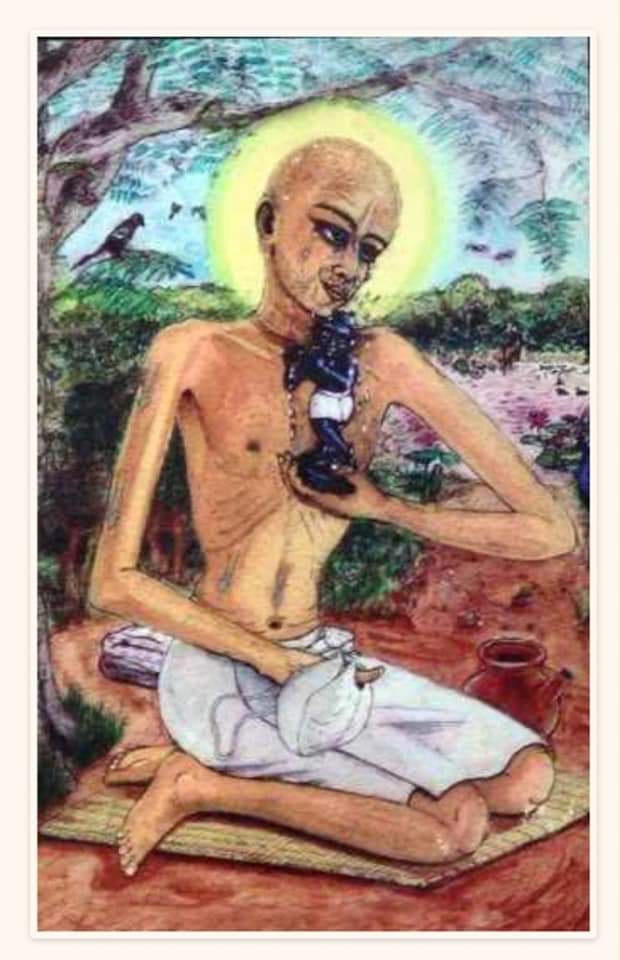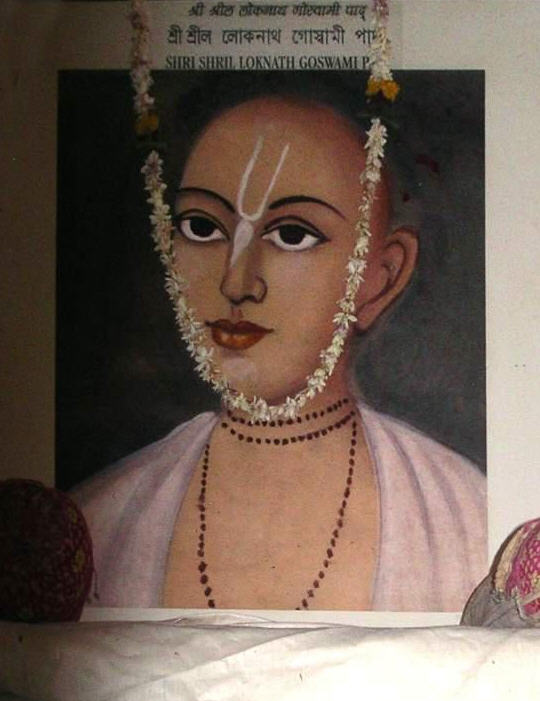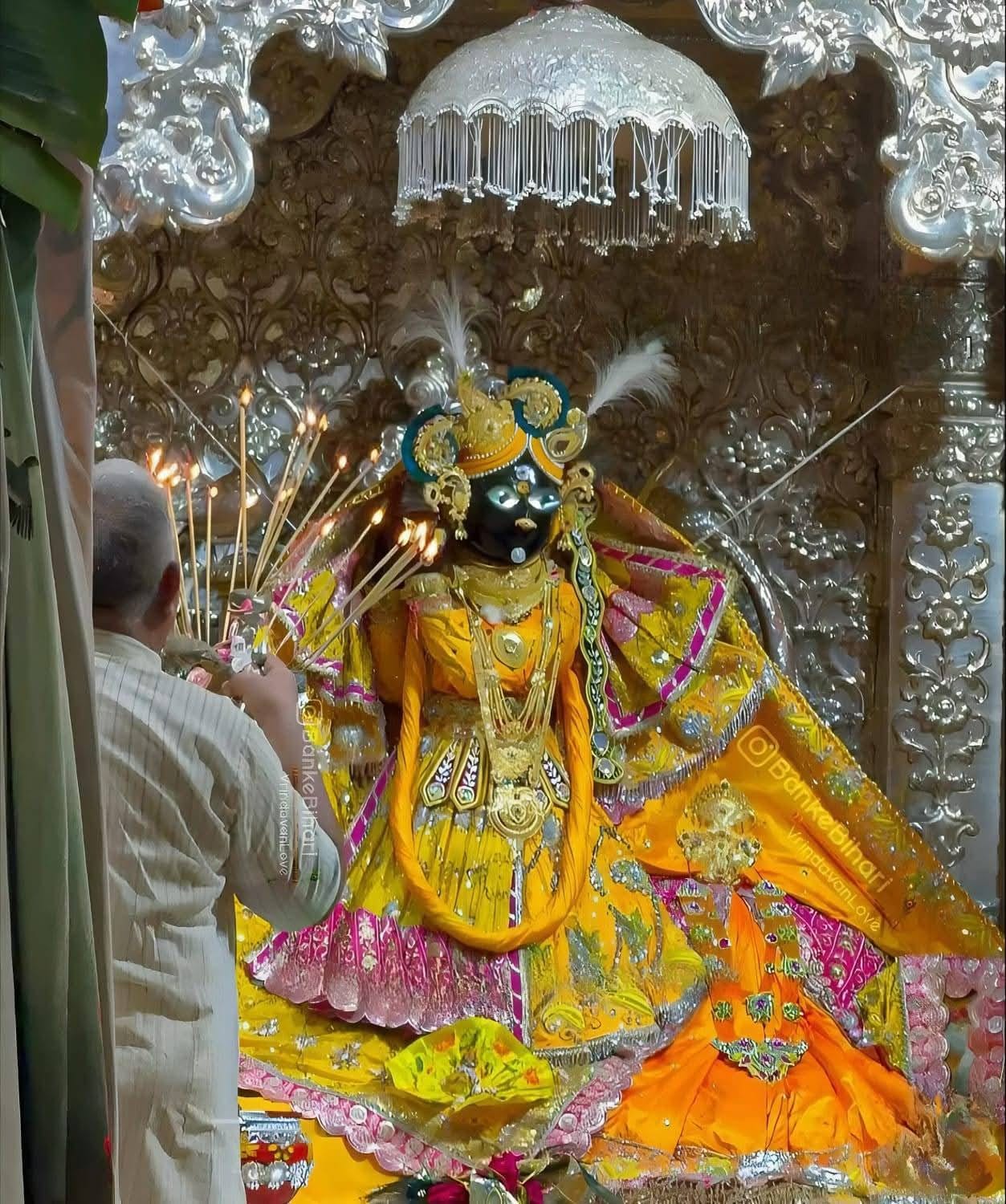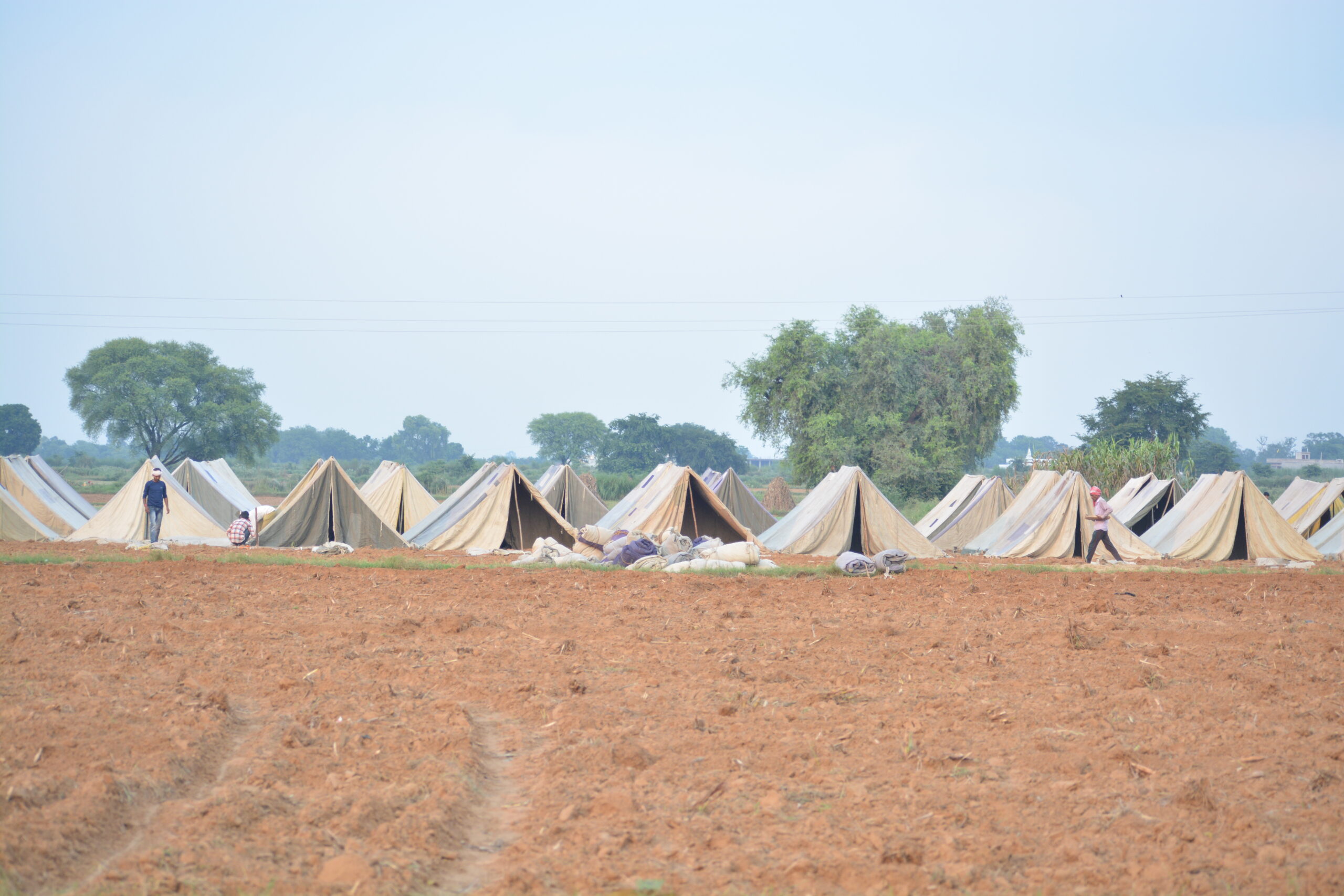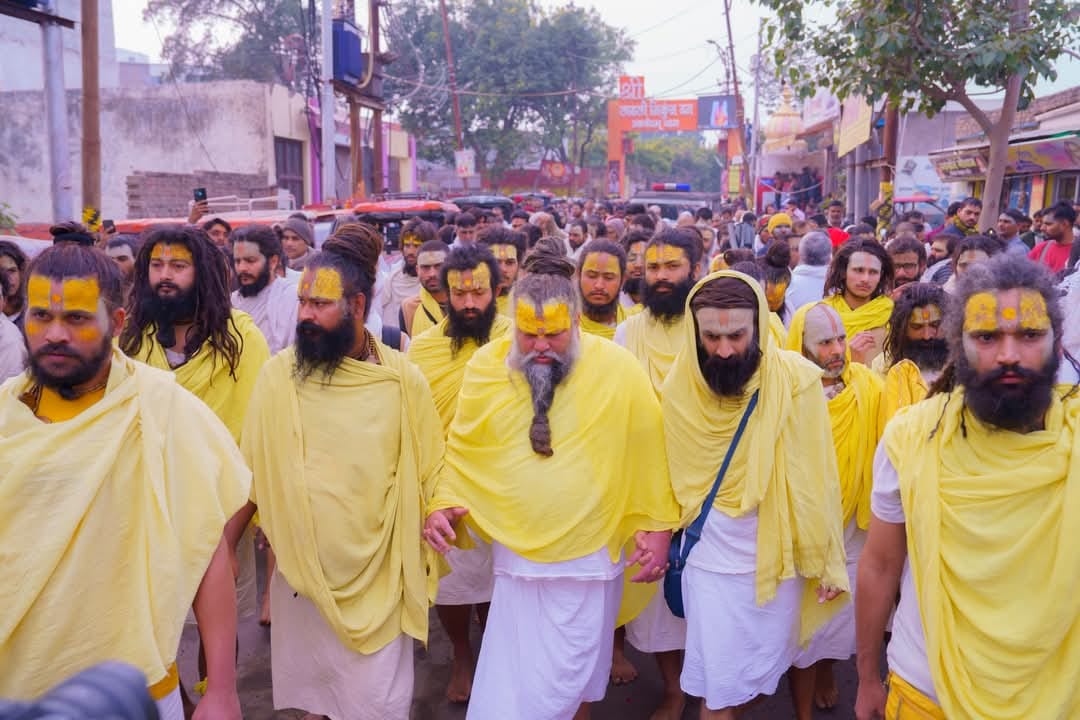Braj – Vrindavan 2021.08.01 (Vrindavan Today News): The Tirobhav Mahotsava of Shri Loknath Goswami was celebrated on Sunday at Shri Radha Gokulananda Mandir in Vrindavan and Kishori Kund, at Omraya village of Chhata in Braj.
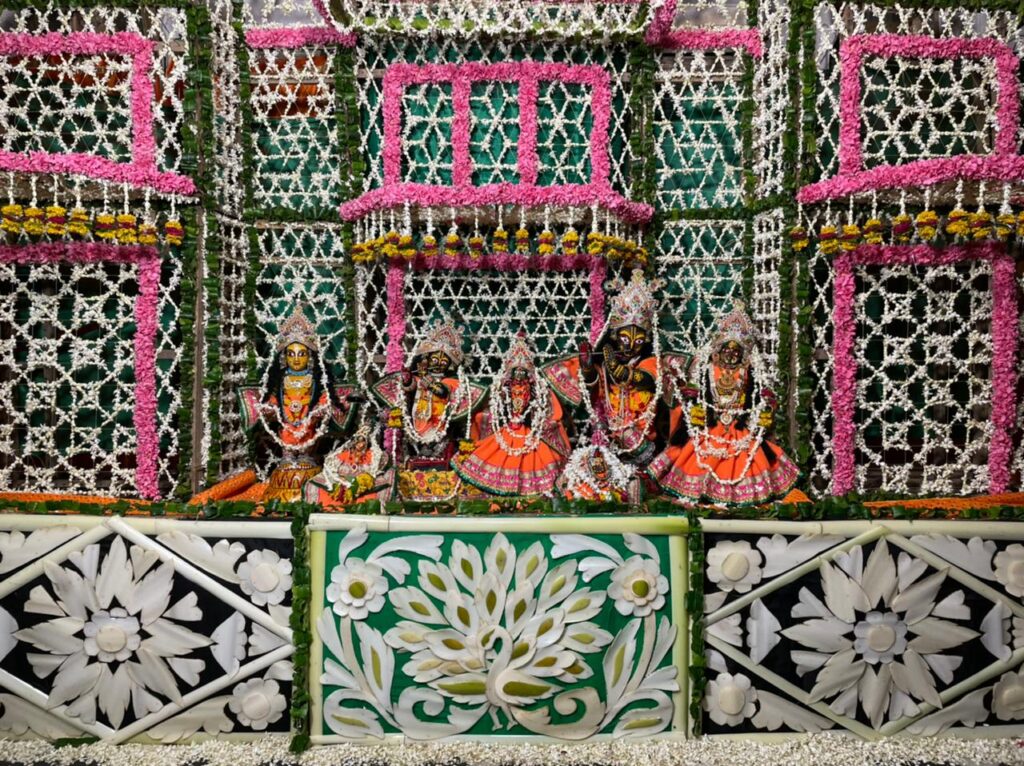
The Disappearance day anniversary of Shri Loknath Prabhu is also known as ‘Dhiyo Dhiyo Mahotsava’ among the Brajwasi Vaishnavas. The Loknath Goswami disappearance day anniversary is celebrated on the eighth day of the bright fortnight in the month of Shravan. Shri Loknath Prabhu’s Tirobhav Mahotsava celebration was organised under the guidance of His Holiness Acharya Shrivatsa Goswami ji Maharaj at the campus of Shri Gokulananda Mandir, where the Samadhi of Loknath Goswami is situated in Vrindavan. A Eight day long regular discourse on the life of Shri Loknath Goswami and his contemporary Acharyas was conducted by (Dr.) Achyuta Lal Bhatt everyday between 5 p.m to 7 p.m to commemorate Shri Loknath Goswami. The babajis sung the Suchak Kirtan in honor of Shri Loknath Goswami. A less number of devotees participated in the Harinam Sankirtan, following the Covid – 19 protocol, maintaining social distance. The week long celebration was concluded with the flower decoration of Shri Radha Vinod ji Maharaj (Phoot Bangla) and a feast with very low gathering.
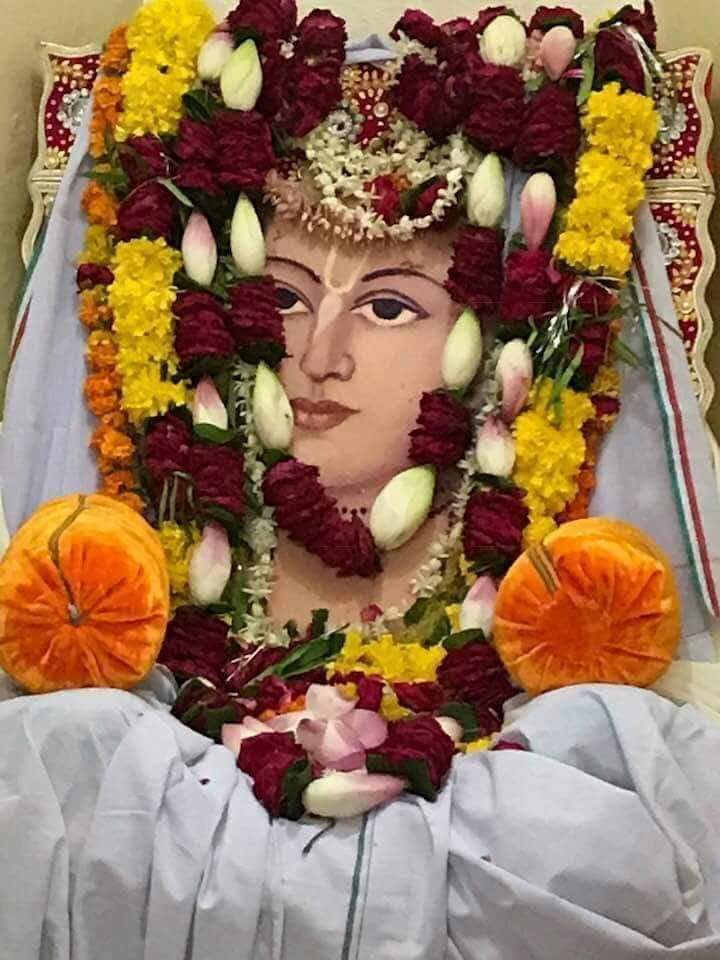
At Omraya, the Disappearance day ceremony was celebrated under the direction of Mahant Shri Parameshwar Das. A 24 hours Kirtan was organised during this occasion. Thousands of grateful villagers from around the shrine attended the ceremony. The rituals were followed by a feast in which the Mahaprasad was distributed among the devotees.
The Lord presents Shri Radha Vinod to Lokanath Goswami
Shri Lokanath Goswami, the first of the Six Goswamis to arrive in Braj, resided in a secluded place on the banks of Kishori Kund in Khadiravan (presently known as Khayro village, 3 miles from Chhata). One day, Shri Krishna personally appeared in the form of a Brahman in the secluded forest and approached Lokanath Goswami. He put beautiful Deities in the hands of Goswamiji, then disappeared. These were the Deities of Shri Shri Radha Vinoda.
Then the Deities spoke to Lokanath Goswami, “I have been living in this forest for a very long time waiting for you. I know the desire of your heart is to worship Me in My Deity form. Therefore, I have personally come to you. Now I am very hungry. Please bring me some food.”
When Lokanath Goswami heard this, his heart flooded in ecstasy and he wept uncontrollably. He went to the nearby village and got some grains, fruits and roots by begging, then cooked a big feast for the Deities.
He collected flowers and prepared a bed with them for the Deities, putting Them to rest by massaging Their lotus feet; his eyes filled with tears of love.
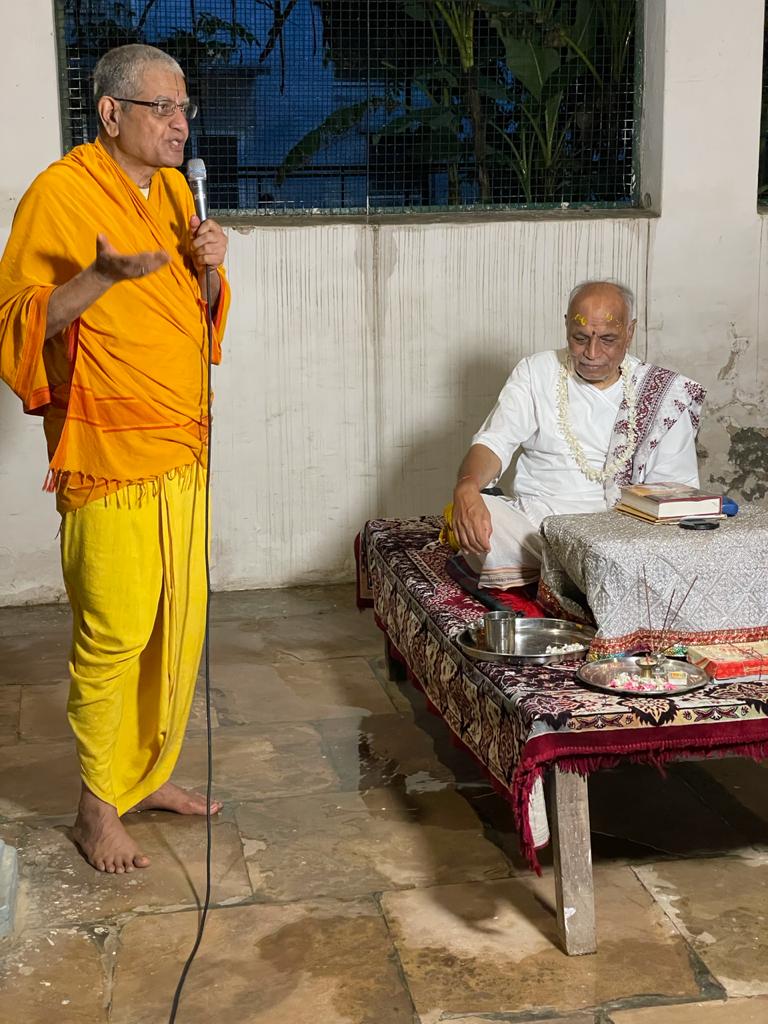
He would make fans from leaves or feathers and become engaged in fanning the Lord while saturated with pure devotion. He sewed a cloth bag which served as the mobile temple for Shri Shri Radha Vinoda. He would carry Shri Shri Radha Vinod with him wherever he went.
Later, at the request of Shri Sanatan and Rupa Goswami, he moved from Khadiravan to Vrindavan and established Shri Shri Radha Vinoda in the temple now known as Gokulananda temple.
A Childhood friend of Chaitanya Mahaprabhu
Shri Lokanath Goswami was a childhood friend of Shri Chaitanya Mahaprabhu and later became his follower. Lokanath Goswamipada was born in Talkhandi village, Yashohar district, in present-day Bangladesh. He is known as the incarnation of a gopi named Manjulali or Lila Manjari.
Shri Lokanath came from a scholarly family and began to study Shrimad Bhagwatam from Adwaitacharya at age 14. After completing his studies, Lokanath returned home and started his own school. He always remained absorbed in Love for Radha Krishna. Mahaprabhu was always in his heart.
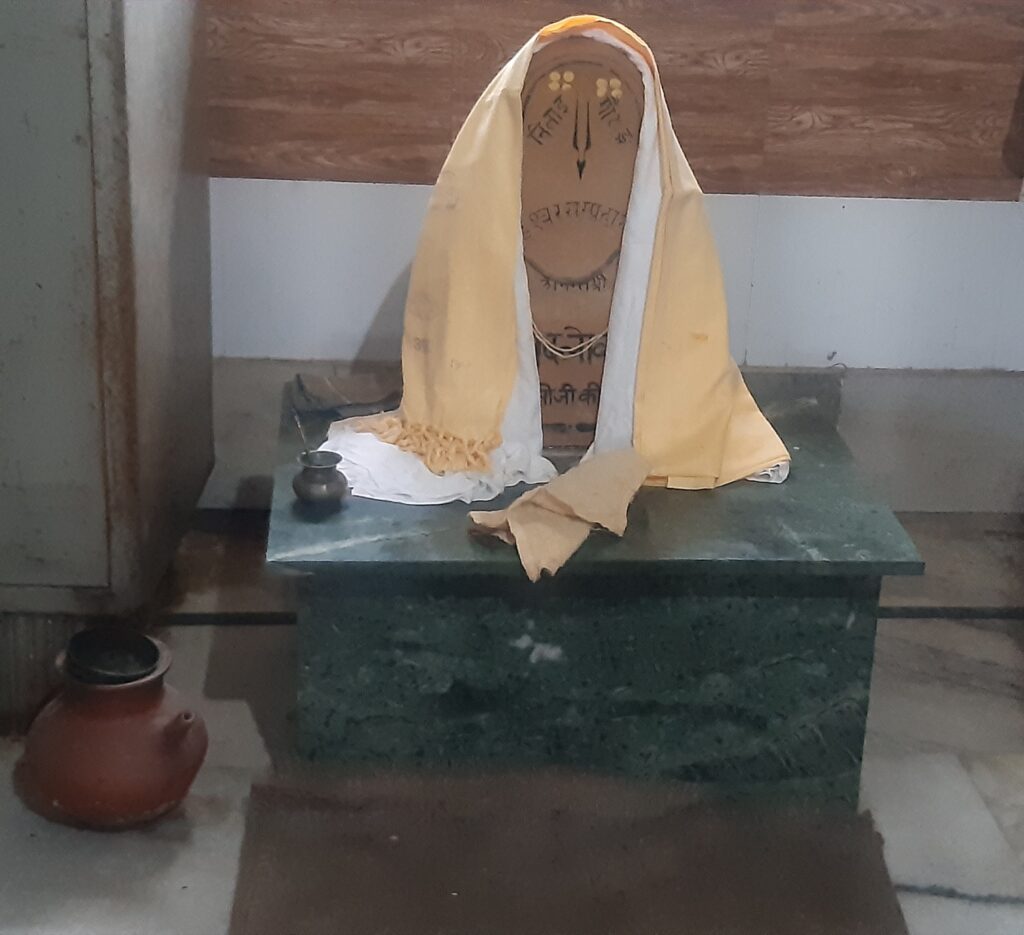
Eventually, Lokanath renounced the world and came to Navadwip to surrender himself at Mahaprabhu’s feet.
Lokanath’s Mission
Mahaprabhu instructed Lokanath to go to Vrindavan and rediscover the lost holy places of Shri Krishna’s pastimes. Shri Lokanath followed that instruction with all his heart.
The work was very difficult because the scriptures only give a general idea of where these holy places are, and the forest was thick and full of dangerous animals. But, by the mercy of Shri Radharani, he was very successful in his efforts.
Braj Bhakti Vilas states that Lokanath Goswami discovered 333 of the lost holy places in Vrindavan. Bhugarbha Goswami, a disciple of Shri Gadadhar Pandit, assisted him. Later, Shri Roop Goswami, Sanatan Goswami, Shri Gopal Bhatta Goswami and others continued this seva.
Lokanath Goswami did not write any books but it is believed that Shri Roop and Sanatan learned a lot from him and he may have had a substantial influence on their writings.
The Next Generation
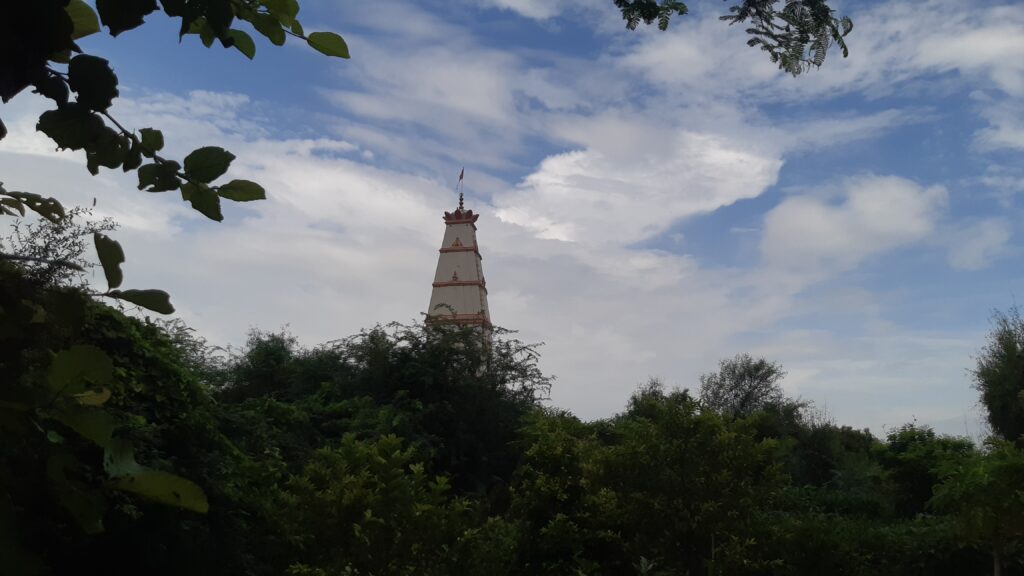
After Mahaprabhu left his body, many other pillars of the Gaudiya Sampradaya also left this world. Nityananda Prabhu and Advaitacharya left, as did Shri Roop and Sanatan, and Shri Raghunath Bhatta Goswami. Shri Raghunath Das Goswami retired to Radhakund, weeping constant tears of separation.
The only leaders of the Sampradaya who were still in Vrindavan were Lokanath Goswami, Bhugarbha Goswami, Gopal Bhatta Goswami and Jeev Goswami.
The next generation of the Gaudiya Sampradaya was already starting to take form. One of the most promising young aspirants was Narottam Das. He was from a royal family, but renounced it all to live in Vrindavan.
Narottam wanted Lokanath to be his guru, but Lokanath had taken a vow not to initiate anyone. He also would not accept seva from anyone. But Narottam was determined that only Lokanath would be his guru. And so he found every opportunity to serve him in secret.
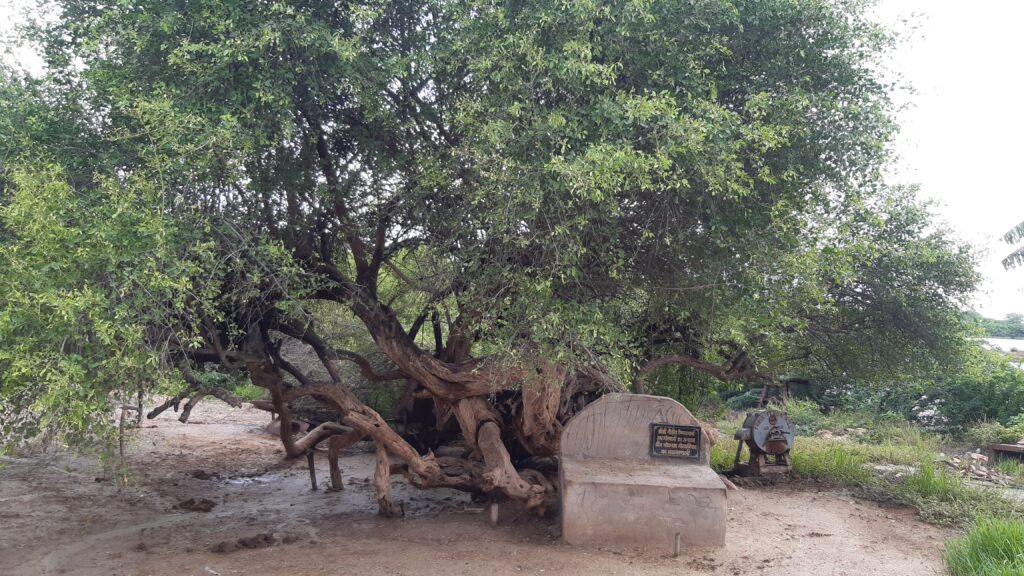
Narottam’s Guru Seva
Every day at about 3a.m. Narottam went to the place in the forest where Lokanath went for the call of nature. Narottam cleaned the spot with a broom and placed an earthen pot full of water there for Lokanath to use. He then hid behind a tree and waited until Lokanath came. And, afterwards, he would remove the faeces and again sweep the spot with a broom.
He did this every day. Narottam was so happy to do this seva for his chosen guruthat he would hug the broom and wash it with tears.
After a year, Lokanath began to wonder who was serving him in this way. He decided to find out.
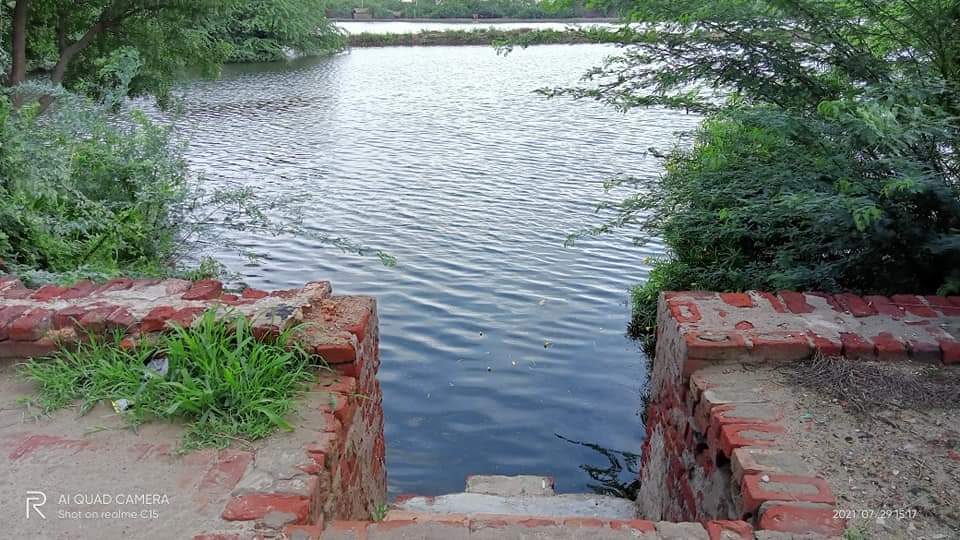
One day he went early to the forest and watched as Narottam came and began to sweep the spot. It was very dark, and Lokanath was not able to see him clearly.
“Who are you?” he asked
“I am Narottam.” replied the man in a humble voice.
“Narottam? You do this work every day?”
Lokanath was moved and finally agreed to give Narottam initiation. By his blessings, Narottam Das became one of the great leaders of the Gaudiya Sampradaya.
Entering Nitya Lila
As Lokanath was preparing to leave this world, he gave Narottam his wooden sandals and bade him farewell. He entered the Nitya Lila on Shravan Krishna Ashtami sometime between the years 1583 and 1588AD.
